When you're a birder, you are bound to have a nemesis
A story of my long time nemesis, the American Bittern
Wandering through the maze of Rob’s basement renovations, I finally catch his eye. He starts, surprised to see me. “You’re not going out again, are you?” he says, half smiling. He already knows the answer to this question, as with camera slung over my shoulder and and ball cap on, I‘m wearing what he recognizes as my “birding gear.” What he's really asking is “Are you sure going out again is a good idea?”
Earlier, I had trudged home freezing cold, my mood just as damp as my feet. But one nap and several mugs of hot tea later, I am renewed. I have a fresh mission as well as a fresh pair of dry socks.
“I’m going to LaBagh” I proclaim.
“What’s there?” Rob’s not a birder, but he knows if I’m leaving again there must be something special.
“An American Bittern.”
Yes, the American Bittern, my long time nemesis. William Burt, author of Rare and Elusive Birds of North America, describes the American Bittern as:
a bulky bird, big as a good sized hawk—too big to live in the jungle thickness of a marsh, but so it does. It is a masterwork of camouflage, besides…pass it by and it stretches skyward and freezes—a trick known as “bitterning”—merging perfectly with the vertical world around it.
eBird has reminded me all week that I have yet to see this particular “marsh magician,” with the first Needs Alert email landing in my inbox on April 13, when one was spotted on Chicago’s South Side at Marian Byrnes. The following day, another email informed me one was at Big Marsh, then on Wednesday, at Bartel Grassland. By Thursday morning, I was ready to find my lifer American Bittern, and I was going to find it at LaBagh Woods.
LaBagh is one of my favorite birding patches and has great habitat for migrating American Bitterns—winding riverbanks, an oxbow slough right in the middle of the woods, and plenty of places to hide. Perhaps because of these bountiful hiding places, American Bitterns are found at LaBagh once a season at best, and I’ve been missing them there every single migration season since 2016. And, because they’re my nemesis, I usually just miss them. Like the one time they stalked out into clear view not thirty minutes after I’d left, and the other time they were standing right alongside one of my regular trails, but “just a few hours ago.”
I’ve also missed American Bitterns at Park 566, when they are usually spotted either a day or so before or after one of my regular visits. Unsurprisingly,
has seen American Bitterns at Park 566 several times over the last several years, but not once when I’ve been with him. Last April, while birding the park with his sister, he found an American Bittern standing in the middle of the damn road. This is the picture he texted me. See that blob in the left side of the road. Yep, that’s an American Bittern, standing out in the open, possibly overly confident in their masterful camouflage.I’ve missed American Bitterns so often at both of these places that now I only want to see one at either LaBagh or Park 566. Last September, one was hanging out at Lincoln Park’s South Pond for days, but I did not go see that bittern. No, the only way I want to meet my nemesis is at either LaBagh or Park 566.
So Thursday morning I headed out to LaBagh before sunrise—I had 2 hours to search LaBagh’s likely bittern spots before starting work. Well, those 2 hours came and went and I left the swampy woods with exactly the same number of American Bitterns on my life list as when I started—a big, fat, ZERO.
Saturday morning, I met up with Dan at Park 566 as usual. We were there to see whatever birds we could find, and hoping for our first Grasshopper Sparrow. But as we slogged through the constant drizzle and steady cold winds (my least favorite birding weather), I causally commented “you know, American Bitterns are back in town...”
“Oh, we should check along the lake!” Dan replied gamely. The lakeside berm is one of American Bittern’s favorite Park 566 haunts, so we took the next path towards the lake to start our search. Once we got there, however, we were met not by a bittern but by a bitterly cold blast of wind and rain right in our faces.
“I think I want to head back to the road” I whimpered. I was way underdressed for this type of weather and regretting my lack of gloves and leaky hiking boots that were getting wetter and colder by the second. I just had to hope if there was a bittern in the berm, they might get flushed by the dog walker that was coming up the lakefront trail behind us.
Well, the dog walker and his 5 tiny dogs came and went—if there was a bittern hiding in the berm, they deserved to remain unseen. I left Park 566 half-frozen and with the aforementioned damp mood and damp feet and exactly as many American Bitterns on my life list as when I started.
“Thanks for being miserable with me” I called to Dan as we parted ways.
Once home, I fired up my computer to start going through the morning’s photos, and took a moment to scan through my inbox. There was another eBird Needs Alert.
WHAT…………THE………… HECK!?
While I was I freezing my butt off down at the lake,
had found an American Bittern at LABAGH WOODS! He provided details of his sighting in eBird: “Seen in swampy area on a log. Seen from viewing area with railings/logs.” Aghhhhhh!!!!! Exactly where I’ve always looked for them and exactly where I’ve never seen them.You might suppose that this report immediately propelled me back to my car and right over to LaBagh Woods. You’d be wrong. I read that report and thought “Ah well, missed again! Maybe it’ll still be there tomorrow…” and went about my business. I even took a nap!
It took me a couple of hours to come to my senses.
“Tomorrow—why wait until tomorrow?” I chided myself. “That bird is there today. Who knows where it’ll be tomorrow??? I have to try to find it today!” I donned my birding gear, said goodbye to my slightly bemused husband, and headed to the woods.
So here I am, at LaBagh. A cursory glance of the slough reveals no bittern in sight, and no birders either. “Okay, you have time, you can find it” I assure myself, and start my search. Typical birding tricks of scanning for movement and listening for bird sounds will be no help here—no, this is a job for slowly and methodically scanning with binoculars. Thankfully American Bitterns generally don’t climb, so I can focus on the spaces between trees at water level.
I start where the slough begins to my left, and start picking through the trees.
There’s a pair of Canada Geese, making a nest. Oh, there’s the two cute Hooded Merganser females, blending in perfectly with the brown surroundings. Wow, there are A LOT of Wood Ducks. Oooooh, and the Blue Winged Teal are still here!
Scanning, scanning, scanning….where are you, Bittern? Please let me find you.
Suddenly, like a true marsh magician, the bittern is there, right in front of me! I can’t believe it!!! I swear I scanned that spot but I guess not. The American Bittern is right there, and looking remarkably like a stripey beige football!
YES!
Basking in the glow of this nemesis-turned-newest-friend, I start taking photos. The bittern isn’t in the best location for my preferred types of shots, but documenting this lifer is my first order of business, and it’s fun to watch the bittern move ever so slowly, changing their shape in remarkable ways as they do so.
But also…my spotting scope is back at the car, and this is a great opportunity for some field sketching….
Tearing myself away, I hurry back to my truck to grab my scope and am back at the viewing area in less than 3 minutes. As I set up my scope and tripod, I scan the area again. Shit, where’d it go? The bittern has disappeared, perhaps hiding from the gaggle of children that have suddenly appeared, shouting “WHERE ARE ALL THE ANIMALS?!?!”
Deb, another LaBagh regular, walks up. “Hey Kelly, are you looking for the bittern?” “Yes,” I reply “and it was JUST here.”
“Hmmm, I wonder why it’s hiding…” Deb says, as we both cast sidelong glances at the boisterous youth.
We set about scanning the area I last saw the bittern, and I’m hoping my encounter with this bird won’t end with the few minutes I spent taking photos.
“Wait, there it is—you can see the head just behind that log” I tell Deb. She sees where I’m looking and finds it immediately. “YES!” Grinning widely, we trade enthusiastic high fives. Look who’s boisterous now!
“This is a lifer for me, Deb, and I really wanted to see my first bittern here.”
Deb beams back at me “I’m so happy you found it here, Kelly!” She knows exactly how special it is to find a lifer at LaBagh.
As we watch the bittern, a Rusty Blackbird calls from the tree tops, and Pine Warblers and Chipping Sparrows sing within the slough. Deb and I chat, other birders come and admire the bird, and families approach, curious about what we’re looking at. I eventually fill a few pages of my sketchbook with bittern shapes.
All the while, if anyone shows even a glimmer of interest, I encourage them to peek through the scope, which transforms that little brown football in the distance into a kaleidoscope of colors, stripes, and shapes. Maybe this American Bittern will spark someone else’s birding journey. Maybe they too will discover the joys of birding, including how a nemesis can turn into a new friend in just the blink of an eye.
Thank you so much for reading this story about my nemesis. I’m curious, do you have a nemesis bird? Or a recent nemesis bird turned new friend? Or is this the first time you’ve learned that birders have nemeses? Please share in the comments.
All photos by me, Kelly C. Ballantyne, unless otherwise noted
p.s. Rosemary Mosco defines a nemesis bird as: a bird belonging to a species that you keep trying and failing to see... usually.
p.p.s. Rosemary has a new book coming out, The Birding Dictionary, and it promises to be just as delightful as everything else she does.

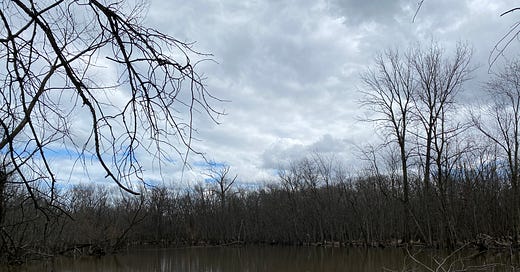



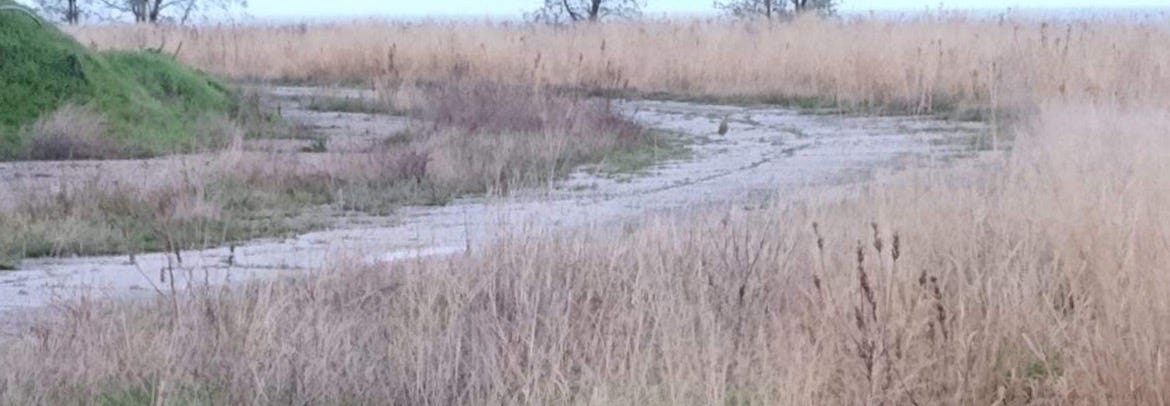

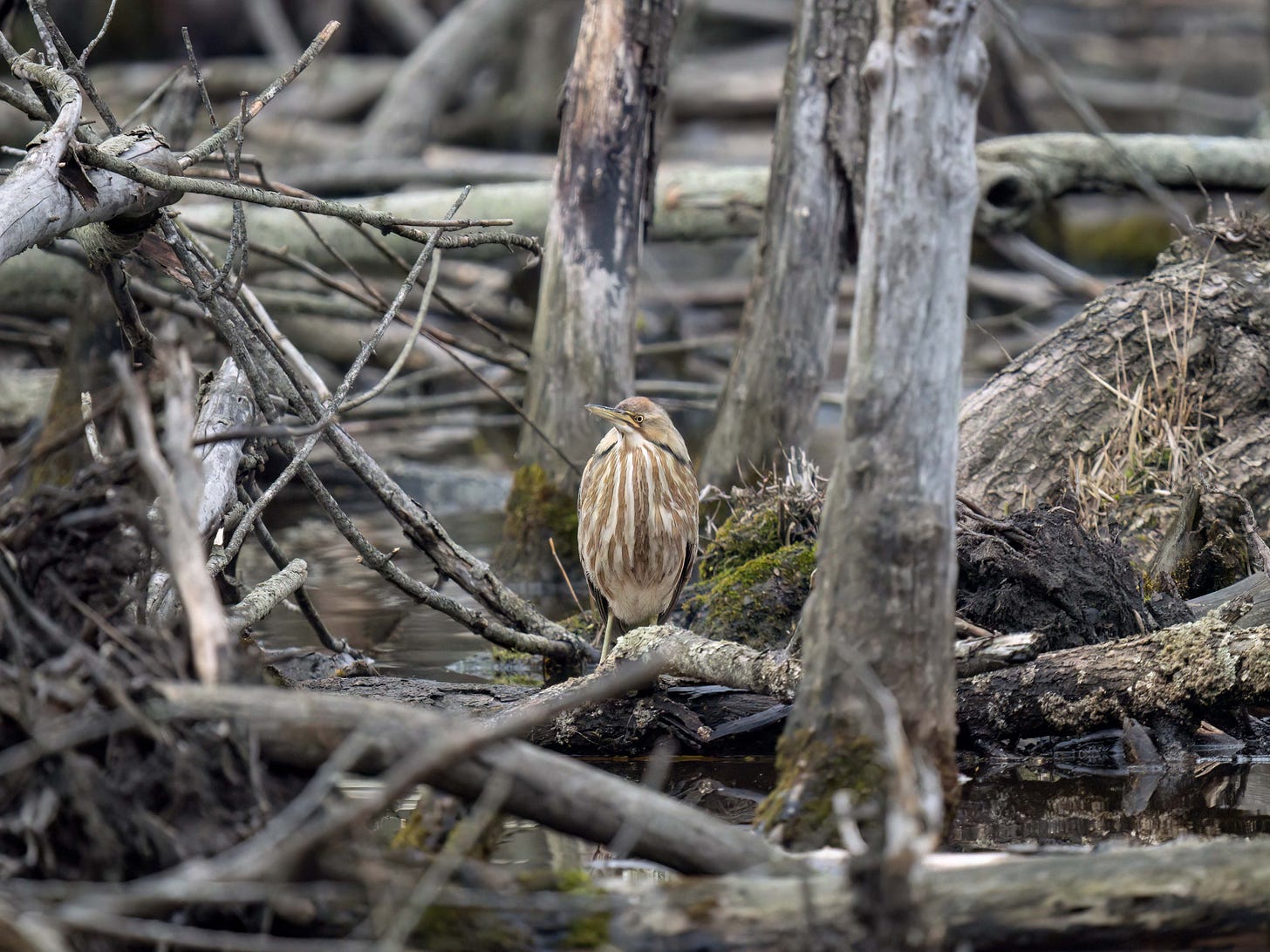
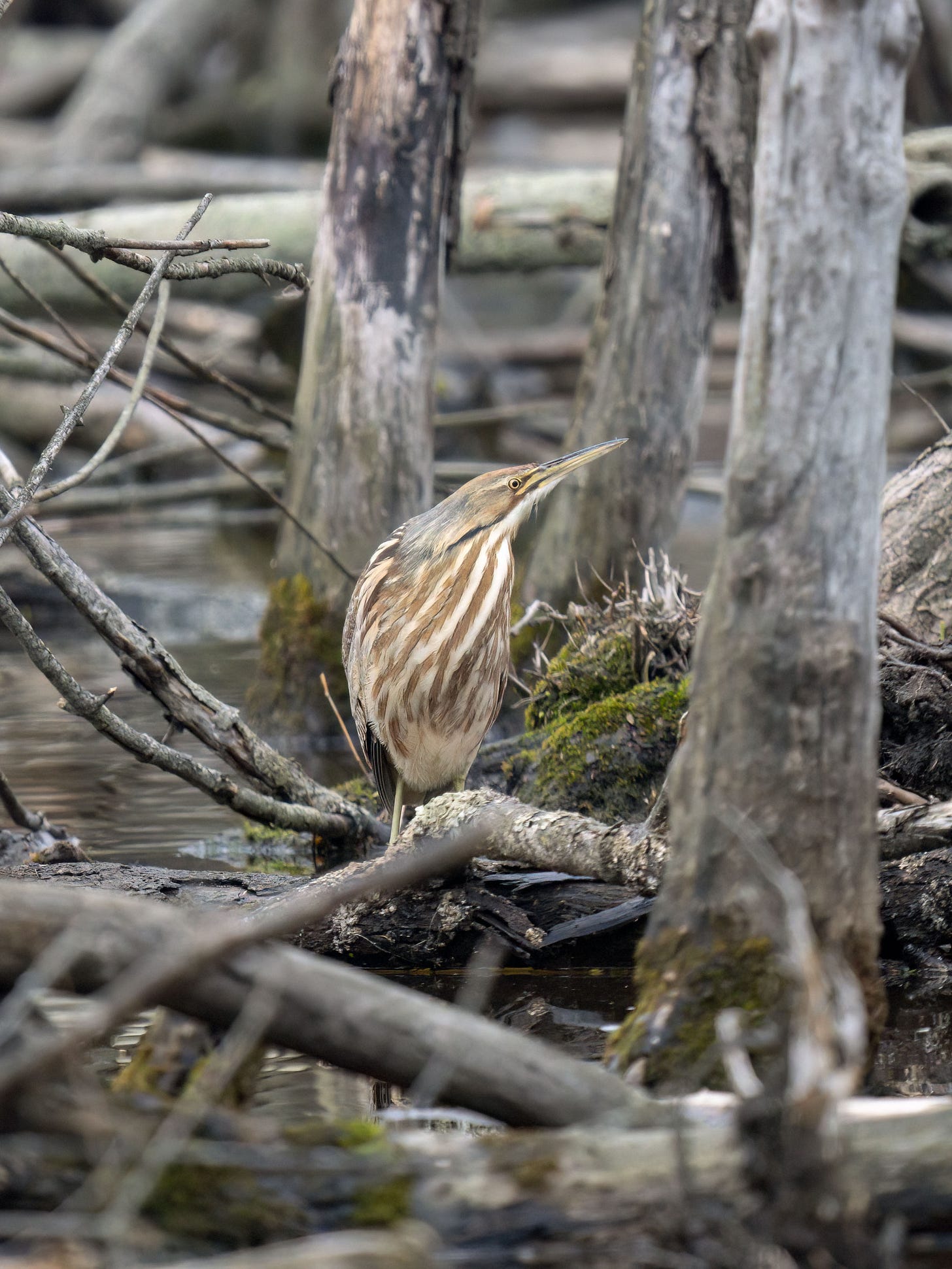
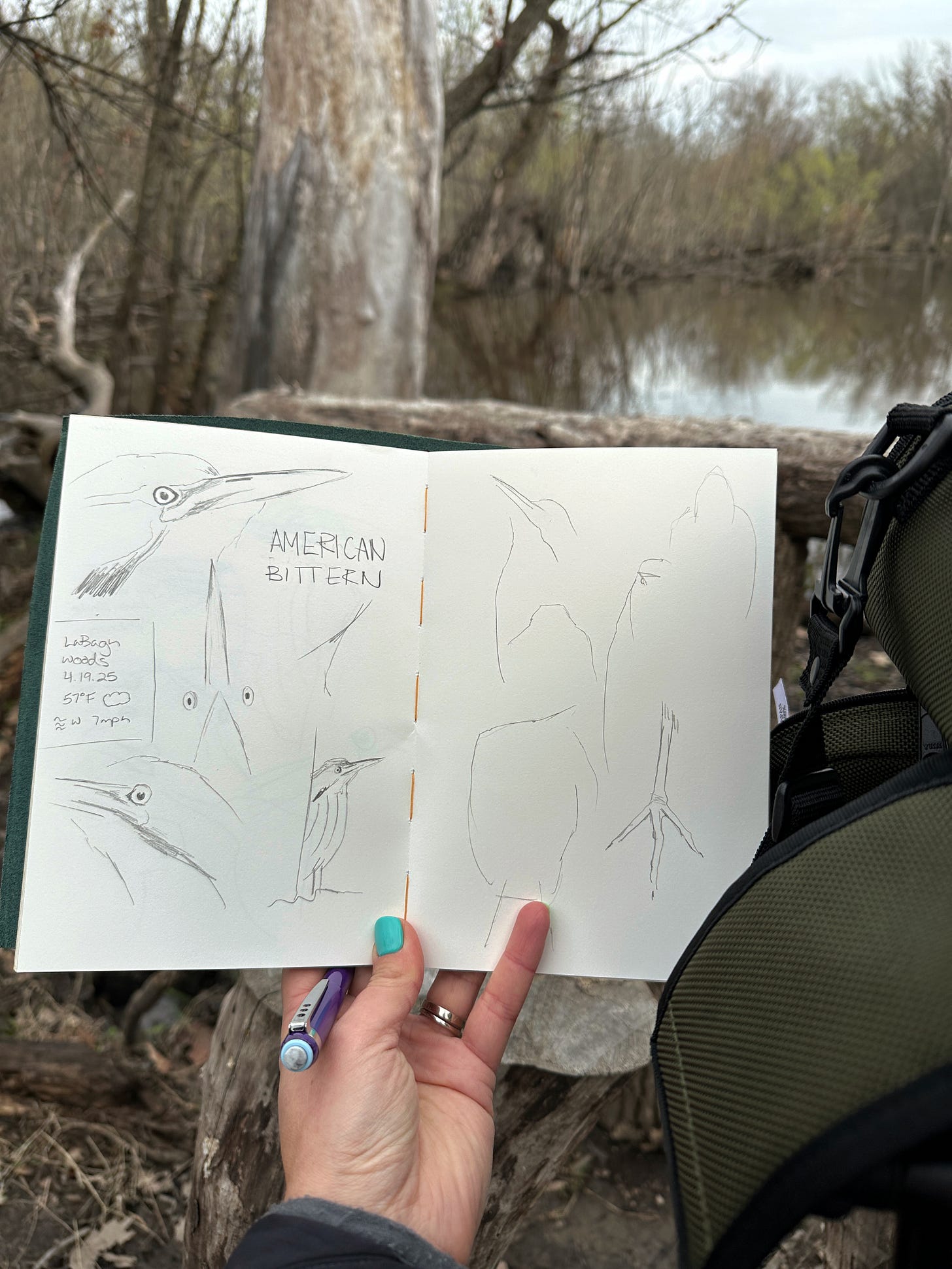
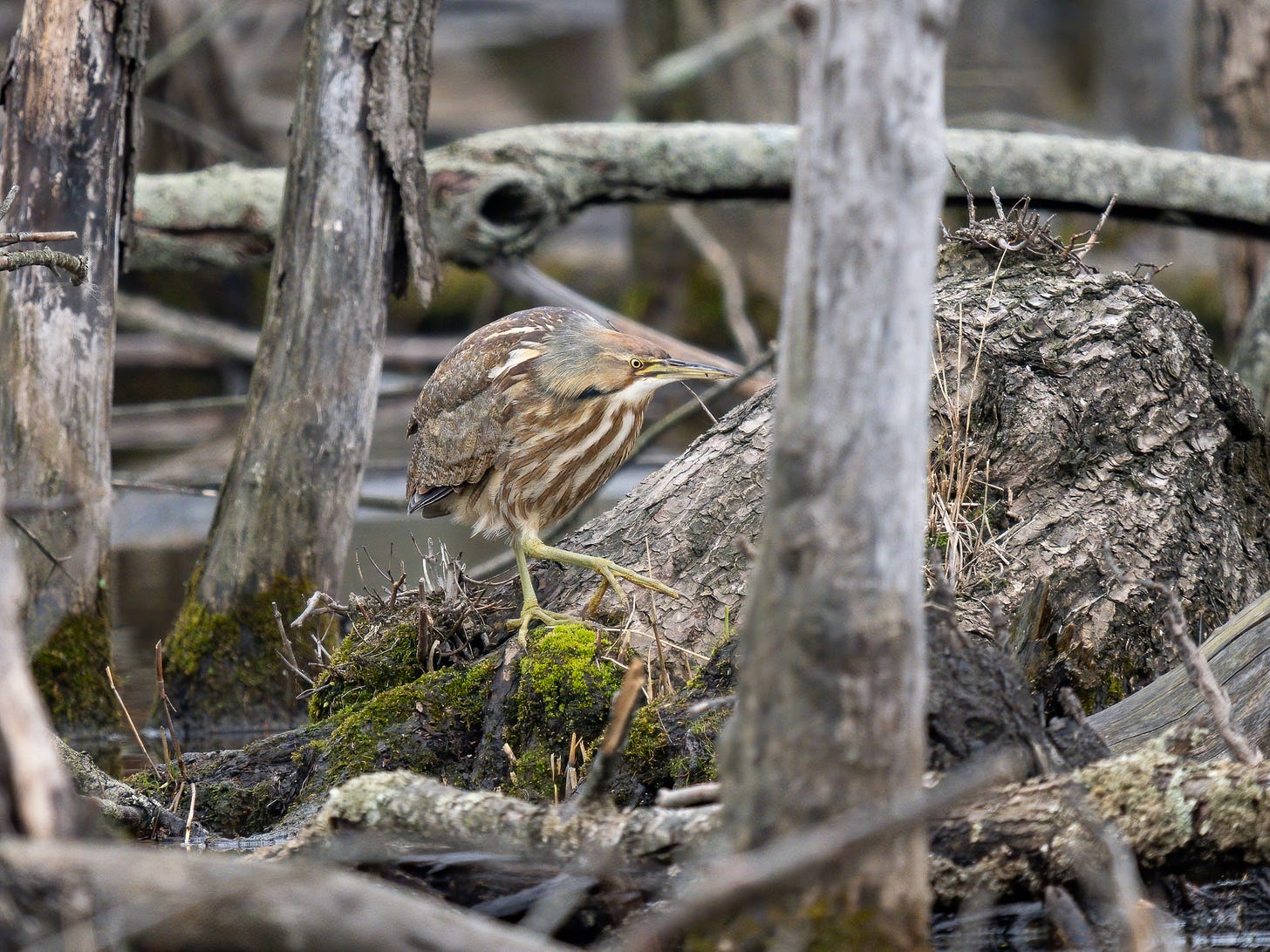
Great account of a great day, Kelly. It took quite a bit of nerve heading back to the car to retrieve your suppliers, but the bittern waited for you! I think maybe you were that bird's nemesis human. Congrats to both of you!
I was so happy finding it but knowing that my report turned a nemesis into a new best friend makes me overjoyed!